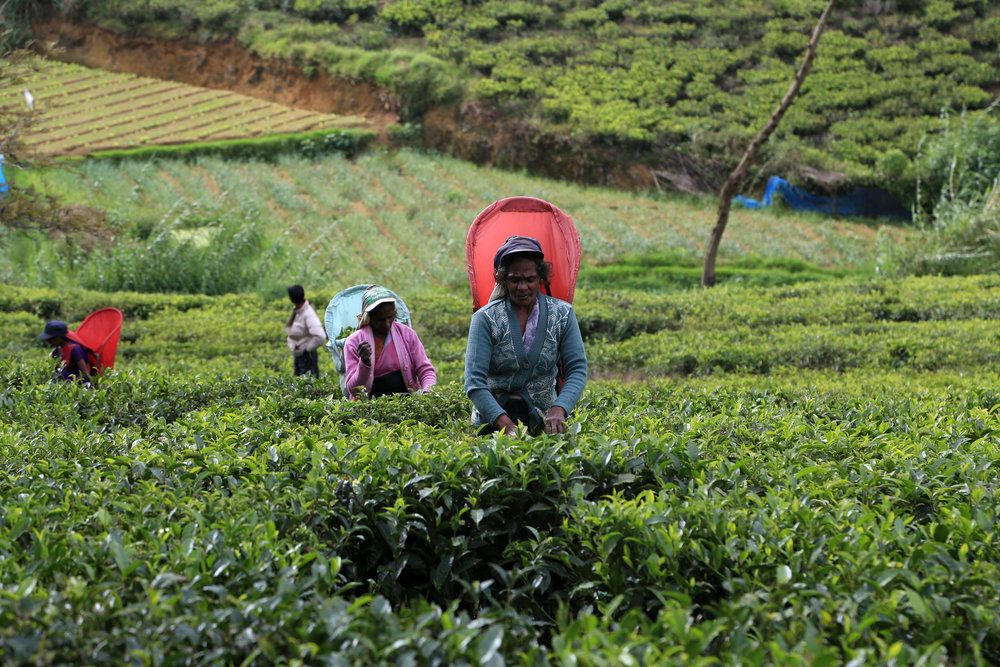Ceylon tea: A journey to the land of green magic

When earlier this month I got an invitation to attend the 150th anniversary of Ceylon tea industry in Sri Lanka, I didn’t know much about the country.
Despite the fact that “Ceylon” has always been a very popular brand of tea among Iranians and the idea of Ceylon tea was very familiar to me, I was really surprised by how little I knew about “Ceylon” itself.
During my weeklong journey I learned so much about the country and its tea industry. I think I was really blessed to get such an invitation to the land of green magic.
What comes below is a description of the knowledge I acquired during the short but definitely fruitful visit. First and foremost, a look into the history and development of the tea industry in Sri Lanka.
Part one: History of Ceylon tea
When in 1867, the 17-year-old Scottish merchant James Taylor arrived in Sri Lanka to establish his very first tea plantation in Kandy (a city in central Sri Lanka), he would have never even imagined that this small farm of his will be the foundation of a great industry in a not too far future.
Before the tea era, coffee was the main agricultural-industrialized food item being grown in the island by the British, but due to some fungal diseases it never reached the commercial production that they expected. There were also some herbs and fruits which served just as food and/or to some extend traded for other goods inside the island.
Short after starting the plantation, it was clear that the island was one of the best places on earth for growing tea. In 1872 Taylor established his first tea factory in Loolkandura estate (in Kandy) and one year later in 1873, the first shipment of Ceylon tea, a consignment of 10 kg, was sent to London.
Soon after, plantations near Kandy began switching from coffee to tea and Kandy became the first tea estate established on the island. Nowadays over 188,000 hectares or approximately 4 percent of the country’s land area is covered with tea plantations.
The Island of Serendipity, with its unique geographical and climatic characteristics showcases special qualities which are authentic to different regions in the island and therefore at different altitudes and under different climatic conditions, the produced teas feature different characteristics. Nowadays, there are seven main regions that produce tea in Sri Lanka namely Uda Pussellawa, Sabaragamuwa, Ruhuna, Nuwara Eliya, Dimbula, Uva, and Kandy.
Since the altitude plays a crucial role in forming soil characteristics and hence tea quality, there is a general categorization for the tea produced on the island, on this basis there are three main types of tea grown in Sri Lanka; there are high-grown, mid-grown and low-grown teas.
Generally, low-grown tea mainly originates from southern Sri Lanka, these teas are grown in plantations from sea level up to 2,000 ft (610 m), mid-grown tea is produced at elevations of 2,000 to 4,000 ft (610 to 1,219 m) and finally above 4000 ft is considered high-grown tea.
All the mentioned seven regions fall under these three categories based on their height above the sea level. The tea produced in Kandy and Uva is considered mid-grown, Nuwara Eliya, Udapusselawa and Dimbula tea is high grown and Sabaragamuwa and Ruhuna are considered low-grown regions.
Of course, it should be mentioned that currently according to the market demand, various types of tea could be blended to obtain the required flavor and color.
Tea cultivated in Sri Lanka goes through several process to get ready for export or consumption. For commercial manufacture, generally two leaves and a bud on top of the plant which have the most flavor and aroma are plucked mostly by women. Sri Lanka is one of the few countries where each tea leaf is picked by hand rather than by machines.
They believe since the women’s hands are more delicate than men so the tea leaves plucked by their hands will be addressed to less stress and consequently have a higher quality after value addition.
Ceylon tea undergoes restrict quality and maintenance testing and research processes by the Tea Research Institute (TRI) of Sri Lanka and the Tea Analysis Laboratory both during the cultivation and after production. The laboratory conducts a variety of physical, chemical, microbial and quality tests on the tea before it enters auction to be sold and exported.
For the time being, Ceylon tea is exported to several countries all around the world and it is a very well-known brand among tea consumers especially in the Middle East.
Sri Lanka holds 18 percent of the global tea exports share and the country is at the time the biggest exporter of black tea in the world accounting for seven percent of the world’s tea production. During 2016, the country exported 288.7 million kilograms (m/kgs) of tea with a total value of about $1.2 billion to the world markets.
According to Ceylon Chamber of Commerce (CCC), the export value of Ceylon tea has contracted in last three years due to several reasons including macroeconomic instabilities and structurally lower oil prices in key export markets.
However, there has been some improvement in exports to non-traditional markets such as China lately; Sri Lanka is exporting about 7 million kg of black tea to China.
Sri Lanka recently celebrated the 150th anniversary of its tea industry which is marked by the establishment of the James Taylor’s tea plantation. The celebration comes at a time when the removal of West-imposed sanctions on Iran once again brings back a main trade partner for Sri Lanka and this could be a turning point for Ceylon tea, helping it back to its top position in the world’s black tea market.
To be continued…
